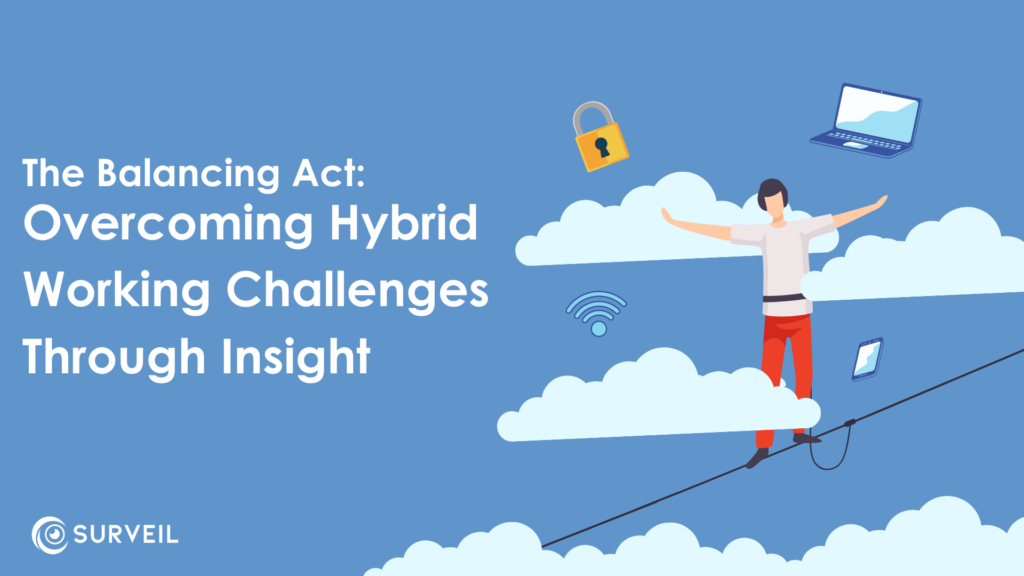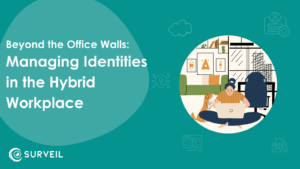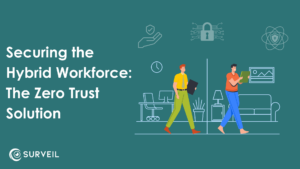Three years into large-scale hybrid working and we’re all still adjusting to the new world. In that time, though, we’ve seen that hybrid working promises great reward – but as with any balancing act, hybrid working’ success relies on a solid foundation.
The hybrid working model – combining remote and in-office work – has made the workplace a vastly different environment for many employees. From swapping office wear with joggers and a nice top, to water cooler chats becoming a quick Teams call, the working world has fundamentally changed – and studies show employees have grown quite attached to the idea.
Despite spending the last couple of years entrenched in the hybrid working model, there are still plenty of challenges to overcome if organisations want to really maximise on its potential. It’s not just the potential benefits to keep an eye on either; Microsoft reported that 51% of UK workers would consider leaving their company if the hybrid option was removed. Ouch.
While the balancing act is more precarious than ever – keeping employees happy and productive, ensuring parity between the office and remote workplaces, retaining and attracting talent with the promise of hybrid working – it’s safe to say that this new way of working isn’t going anywhere fast.
Underpin Hybrid Working with Intelligence
So, what’s the best route to take across the tightrope? Simple: tackle the challenges head-on. To do that, though, we first need to understand what’s affecting hybrid working’s efficacy. That means going into detective mode, seeking out insights and intelligence by asking the right questions.
“How Are People Working?”
Hybrid working relies on two key technological lynchpins: devices and internet connections. Without them, the whole model falls apart straight out of the gate.
Varying connectivity levels are a particular nuisance, as employees can have very different working experiences depending on where they are. In addition to being a frustration during Teams calls, internet connection issues can also lead to difficulties with working on the cloud, with emails going unsent, documents not saved, and information out of reach.
We can’t talk about how people are working without also mentioning devices. Lookout’s recent State of Remote Working Security 2023 reported that 92% of remote workers interviewed had used personal devices for work (and 46% had saved work files on said devices). It’s a terrifying statistic when taking into account the security risk such behaviour poses.
Meanwhile, there’s also device inequality to consider. Do hybrid workers have access to a device that can give them the same capabilities as their always-in-office colleagues enjoy? Are they able to be maintained and managed by IT to the same degree?
With productivity, security, and the entire hybrid working model at stake, questioning how people are working should definitely be the first question you ask. Then it’s time to ask…
“How Are People Collaborating?”
We all know that effective collaboration is key for the success of any team; it encourages productivity, creativity, and innovative thinking. Communication and coordination are at the root of collaboration, making these clear focus points for any business – but the focus can get a little blurry when there’s distance in the mix.
In a hybrid work setting, it can be difficult to carry effective communication across the whole organisation; there’s no communal whiteboard to huddle around, and you’re less likely to have a co-worker drop by your desk with a good idea. Collaboration, then, needs a new approach in order to thrive.
Employees who work remotely might also experience feelings of isolation and detachment from the company culture, resulting in an overall lack of motivation and engagement. In turn, office-based workers may feel disconnected from their remote colleagues. It’s vital that hybrid workers feel involved with their other colleagues so that collaboration and company culture can continue even from afar, but it’s one of the most delicate areas of balance.
Establishing clear standards and using appropriate communication tools such as Microsoft Teams is vital, while encouraging frequent catchups and company events will maintain a great company culture regardless of where everybody is. And, of course, tapping into data around how people are interacting between teams will shine a light on areas of strength and weakness.
“How Are People Staying Secure?”
Hybrid working’s natural reliance on technology has brought with it extra security considerations. With employees potentially using their own devices, falling for phishing attempts, or working on unprotected networks away from IT’s watchful gaze, it’s no wonder that security risks are growing – and as a result, there’s mounting pressure on the IT department to balance budgets with secure remote working.
In this instance, balance can be achieved by understanding how employees are using security features, identifying lingering security gaps, and tapping into the aforementioned device and collaboration data. With a better understanding of the measures they’re currently buying into, it becomes easier to strategically prescribe security training and create work from home policies.
Furthermore, this is the juncture at which all of the above comes together. Investing in devices, leveraging insights, and supporting true collaboration will result in the sturdy foundations necessary for successful hybrid working.
Insights Are the Answer
Everything above adds up to quite an extensive checklist of items to get hybrid working going. But before the overwhelm takes over, it’s worth remembering that one thing underpins everything we’ve talked about: knowledge. Knowing about connectivity and device issues employees are experiencing, knowing whether they’re using security features, and knowing how they’re collaborating with colleagues. Having knowledge to support your hybrid working model will allow for a far more powerful – and much simpler – approach that works for everybody (without crushing IT budgets).
With Surveil, organisations can surface the information needed to support new ways of working by surfacing actionable insights from Microsoft 365 and Azure. They can, for example, better understand whether employees are actually using multi-factor authentication (MFA). Or they can use the platform to monitor the role devices and solutions are playing in helping everybody to collaborate, building a business case for investment and remediation. With insight on their side, the balancing act becomes a walk in the park.
To conclude, maintaining a successful hybrid working model means businesses must set strong foundations with the help of by in-depth insights from across the business. With the future being increasingly shaped by new approaches to working, asking the right questions – and surfacing the right cloud optimisation data via Surveil – is a great place to start building said foundations.
Knowledge and visibility – even from hundreds of miles away – are key to balancing hybrid working success with security and productivity. And when the perfect balance is struck, there are plenty of benefits to be enjoyed by everybody involved.
Interested in learning more about how Surveil’s insights can support collaboration and hybrid working? Get in touch with our team to arrange a demonstration.






